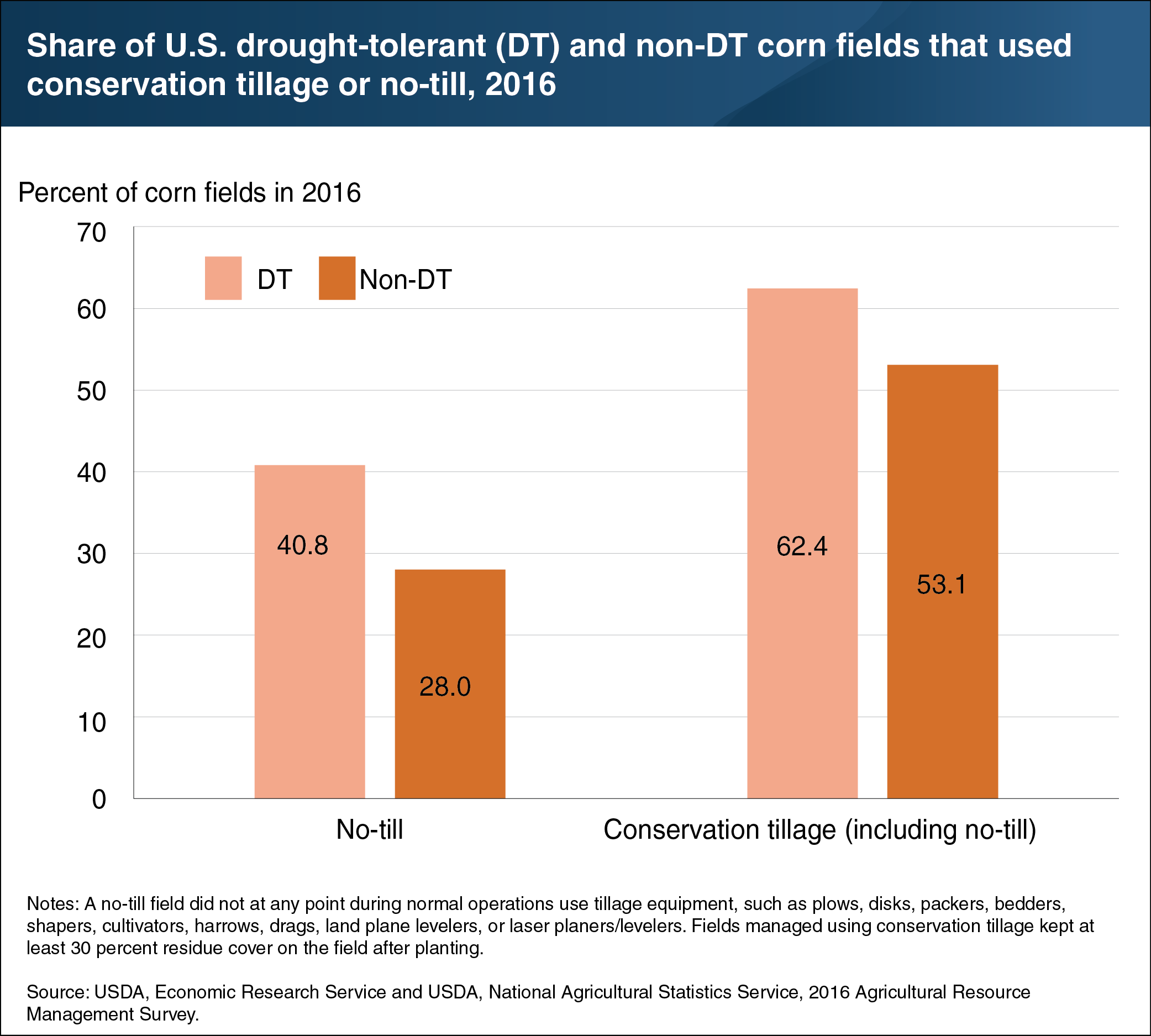No-till and conservation tillage practices are more common on fields planted with drought-tolerant corn
- by Jonathan McFadden
- 6/10/2019

Droughts are among the most frequent causes of crop yield losses, failures, and subsequent crop revenue losses across the world. In 2016, 22 percent of total U.S. corn acreage was planted with drought-tolerant (DT) varieties. DT traits improve the plant’s ability to take water up from soils and convert water into plant matter. This creates a natural link between DT corn adoption and use of other water-management practices in corn production, such as conservation tillage and irrigation. Minimal disturbance of soils through conservation tillage makes more water available to the crop by reducing evaporation. No-till management—a conservation practice in which farmers do not disturb soils using tillage operations—was used on 41 percent of DT corn fields in 2016, compared to 28 percent of non-DT corn fields. Overall, conservation tillage (including no-till) was used on 62 percent of DT corn fields and 53 percent of non-DT corn fields that year. The higher adoption rates for DT corn suggest that producers may be using conservation tillage to complement the DT corn’s ability to conserve water. This chart appears in the January 2019 ERS report, Development, Adoption, and Management of Drought-Tolerant Corn in the United States. Also see the article “Drought-Tolerant Corn in the United States: Research, Commercialization, and Related Crop Production Practices” from the March 2019 edition of ERS’s Amber Waves magazine.

